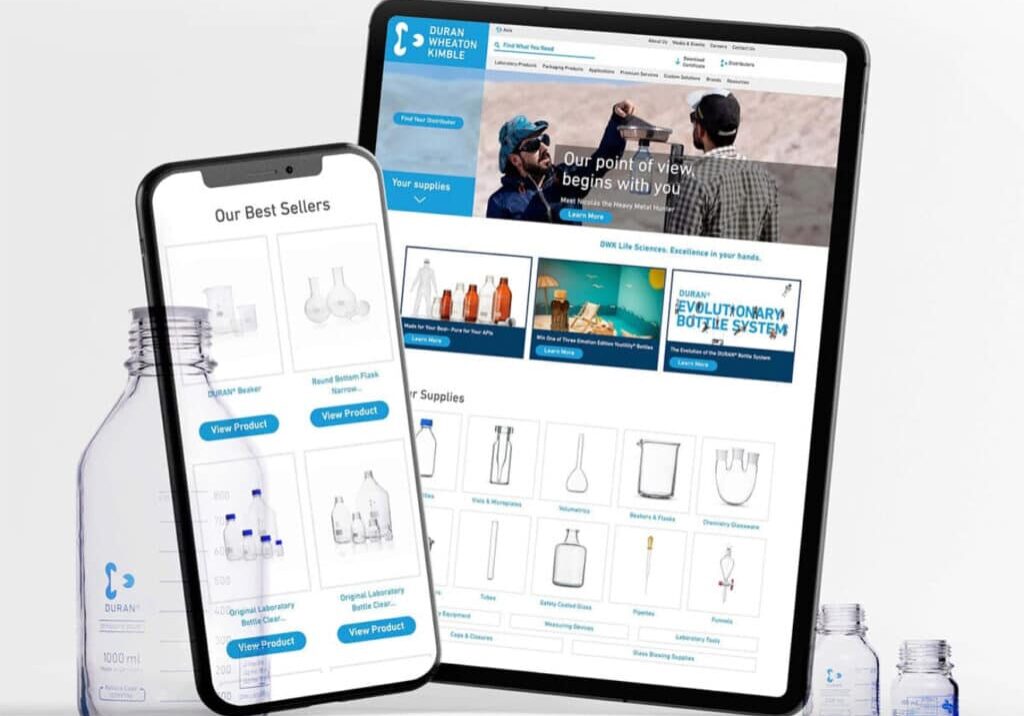Digital Strategy, Web Development
6 Minutes
What’s the Difference Between Web Development Companies?
You’re looking to build a new website and trying to find the perfect partner.
You talk with a few companies and learn that the price can vary from just a couple thousand dollars to well over $100,000.
So what exactly is the difference between a $10,000 website and a $100,000 website?
Below, I’ve detailed the four most important differences between premium vendors and low-cost providers so that you can understand if you will be receiving more value in exchange for more money.
Features
Low-cost web development vendors make money on scale.
This means they have to create standard features for every project and will have to cut corners on many of the nice-to-have custom features that a high-end web development agency values.
As a result, the website will likely be:
- Harder for you to edit and update
- Lacking in technical performance, including speed, security, and responsiveness, leading to a poorer user experience and search engine visibility</span
- Difficult to add on additional features and integrations in the future
Another way to think about this is like you’re purchasing a car.
A Nissan Versa is not going to have the same features as a Tesla Model S.
Sure, they are both cars and get you from location A to B, but a Model S is fully electric, can go 0-60 in 2.5 seconds, and has a 5-star safety rating, autopilot, outstanding technological features, and much more.
How can you tell if your features are limited?
Here are 5 ways you can determine if features are limited during the initial calls with vendors:
- Ask about the ease of scalability and adding custom features or integrations onto the website later. For example, if you use Hubspot, ask about adding a Hubspot integration with your contact form.
- Ask about what their process is for responsive testing, speed testing, and mobile usability
- Ask about technical SEO. Do they take care of SSL (secure socket layer) installation, handle redirections upon launch, and make it easy for SEO updates to be applied?
- Be on the lookout for a lot of “out of scope” and “can’t do that” type of responses as this is a big warning sign that the company cannot support the features you need on the website.
Design
Design is probably the easiest place to spot a difference.
Pretty quickly, you’re going to spot an elegant and professionally designed website versus something that is ugly. But there’s much more here than meets the eye…
Truth be told, a low-cost web development agency can still make something look pretty nice and professional when compared to a high-end agency.
How do they do it?
Essentially, there’s thousands of pre-built templates on a number of platforms including WordPress, Squarespace, and more that allow you to customize the fonts, colors, and imagery.
You can get a pretty good “kind-of-custom” website out of it on a budget, especially if you spend enough time personalizing the template. Unfortunately, at the end of the day, you’ll still be using a template that thousands of other websites are using.
So… what’s the problem?
The problem is that templates look like templates.
I know immediately if a company is using a templated website.
If you’re an established company, this looks extremely tacky.
Design is very important because oftentimes it is how people get a first impression of you.
Like it or not, people do judge your company based on your website, and if you are an established company using a WordPress template, this will likely be a decision you’ll greatly regret.
If you are in the market for a new website, the most important questions you need to ask are:
- Are your websites built on a template or are they custom?
- Are wireframes (blueprints) created before the design phase of the website?
- How many design feedback revision rounds are there?
Steve Jobs had a great quote when it came to design: “Design is not just what it looks like and feels like. Design is how it works.”
Which leads into our next segment… Strategy.
Strategy
Strategy is the biggest differentiator between a low-budget web development company and a high-end firm.
Your website is supposed to serve as your #1 sales and marketing tool: or in other words, your top e-salesperson.
Strategy aligns your business objectives with your website in order to generate results.
This requires big-picture strategic thinking, customer and stakeholder interviews, strategic positioning, understanding of the customer’s pain points and your unique differentiators, and much more. This type of work is highly custom and cannot be executed successfully in a “one-size-fits-all” approach.
Usually, budget web development shops just don’t have the capabilities to do this. You can’t do this with a boilerplate template and you can’t expect a web developer or graphic designer to be a brilliant marketer that understands your business and how to communicate that effectively on the website.
You need personnel within the agency to be highly skilled digital marketers that know how to effectively utilize the best technology with the best strategy to obtain desired results.
Even if a budget web development shop had the capabilities, it would simply take too long for it to be profitable because their business model is quantity over quality.
How can you tell if digital strategy is included?
Here are some important questions you can ask to determine if strategy is incorporated in your new web development:
- What are the different phases of the project?
- How does the vendor learn about your business and objectives?
- Do they understand your target audience?
- Do they conduct comprehensive SEO research?
- Do they conduct stakeholder interviews and ask about your differentiators?
- Do they ask you about what’s currently working and what isn’t?
Additional Tips:
- Ask what the SEO process is and have them share with you behind the curtain what happens with keyphrase research.
- Ask how familiar they are with your target audience and industry.
- Ask them to give a quick on-the-fly critique of your current website, and pay attention to the questions they ask you before they respond. See if they are thinking on a bigger strategic level.
- Ask them how they measure success — hint: the easy answer is traffic. The right answer is KPIs focused on conversion such as sales and leads. More traffic doesn’t equal more business.
Service
Web design and development agencies are in the service industry.
Andy Crestodina, a thought leader in website development, provides a great analogy. He compares a web development company to a restaurant.
“Suppose you’re hungry. When you think of dinner options, you consider what you want to eat, but also consider how you’ll be cared for by the staff. And you have lots of options:
You can hire a private chef (a full-time in-house web team)
You can sit down at a nice restaurant (professional web marketing agency)
You can get a pizza (freelance web designer)
There’s always the drive-thru (template-based, discount web design).”
However, the key difference here compared to a meal is that in today’s world, your website is usually your most important marketing asset which you’ll constantly be improving upon for the life of your business.
How do you know the level of service that will be provided to you?
It’s simple.
Ask if you will have a dedicated project manager that effectively communicates, delegates, and prioritizes tasks to a team of specialists. If that’s the case, then you will probably have a much more organized, communicative, and successful project. If your project manager is also your web developer, strategist, sales rep, account manager, and designer, then you probably have someone who dabbles in everything but isn’t really an expert in anything.
If you expect a high level of service with great results, you need to budget more. Top digital marketing agencies simply can’t sustain talented and specialized personnel without having a significant budget.
The Bottom Line
First and foremost, if you’re a new business and just can’t afford to fork out $35,000+ for a new custom website, then you should go with a budget option until you can upgrade.
For any business that is serious about growth and has the resources to invest in having the best sales and marketing tool, then a new custom website rests near the top in terms of the highest-ROI investments a business can make.
Related Posts
Get a Quote or Ask a Question
- Curious about our process or pricing?
- Need help getting buy-in?
Contact us right away — we’d love to help.
Let’s take a look at your website together and figure out your best options for business growth.

Contact us right away — we’d love to help.
Let’s take a look at your website together and figure out your best options for business growth.



